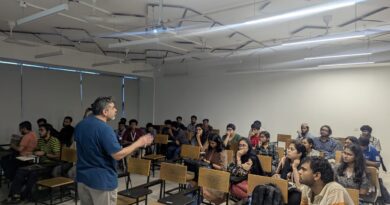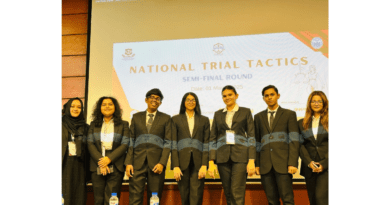Anatomy of a Revolution: Voices of Resistance from BracU
One month since students first gathered in front of Brac University with their right to protest. For many, government jobs were not a headache but the demand for justice was. Since then, a dictator has been toppled, forced into exile, and a student-led government now guides the country towards reform. Amid this historic transformation, Brac University, driven by the indomitable spirit of its students and faculty, emerged as a key center of resistance.
The scale of the protests that unfolded at private universities is likely the largest in history. The last time such a movement arose was during the 2015 “No VAT” protests. However, the brutality and aggression displayed by the police this time were unparalleled according to many.
The July 1st quota reform movement began in full swing following a court ruling that reinstated a 56% quota in government jobs. Initially, the movement was concentrated in public universities, where most government job aspirants study. Private university students, generally focused on private sector careers or higher studies abroad, remained largely indifferent.
However, the violence witnessed against public university students on July 15th changed many of their opinions. The brutality against their peers ignited a fire within private university students.
In between the mid-term exams held until the afternoon of July 15th, the mayhem forced the administration to cancel the remaining exams on the 16th. Unlike the chaos across the country, the demonstration on the 16th was peaceful. Hundreds of students gathered in solidarity with the nationwide quota reform movement.
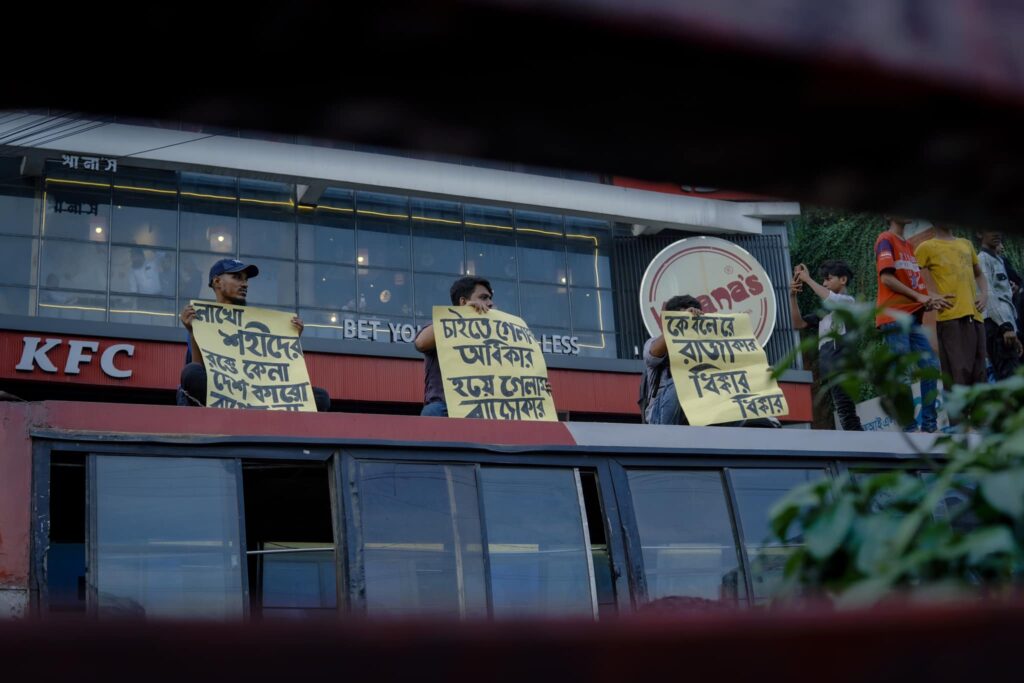
July 17th was quiet at BracU, as protests were called off due to Ashura. On the 18th, students planned to hold a Gayebana Janaza for the fallen protesters. However, police attacks turned the campus into a battlefield, and no prayers could be offered that day. Instead, the air was filled with chants: “Murderer Hasina,” “Dictator, go down.”
Images of police firing tear gas into BracU that day reached international media. Amnesty International reported that an officer shot tear gas through the university gates into a crowd of students in an enclosed courtyard. Their investigation labeled this use of force both unlawful and a clear violation of human rights.
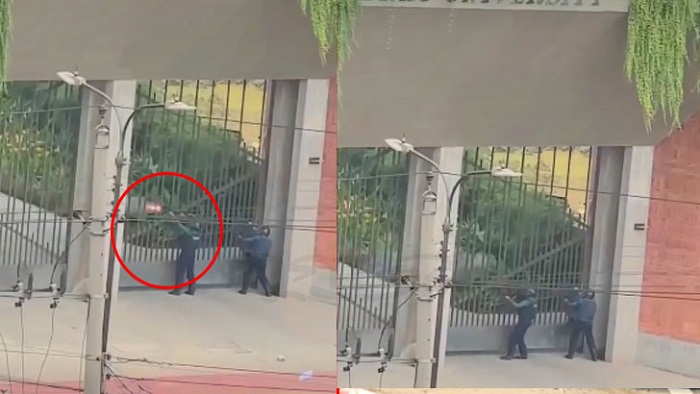
Arnab Debnath (Sophomore, CS) vividly recalls the horrific events of July 18th: “Around noon, a group of police officers approached near the BracU gate with an armored personnel carrier (APC). They started firing indiscriminately from inside the APC. I saw four or five students covered in blood being carried by others into the campus. But suddenly, a group of students charged the police, throwing bricks and stones at the APC. More students came out from inside the campus, and eventually, the police had to retreat.” For Arnab, this was the defining moment of the day.
The day’s violence brought a tragic loss: Md Zillur Sheikh, an HSC ’26 student from nearby Imperial College, became the movement’s first martyr. The campus fell silent as his body, draped in the national flag, was carried away on a stretcher.
The support from BracU’s administration and faculty was commendable. The university’s medical center was quickly opened, with a team from BRAC providing critical aid. Associate Professor Seuty Sabur of the ESS department, alongside other deans and chairpersons, offered vital guidance to the protesting students. They maintained constant negotiations with the police to ensure a safe exit. By 5 p.m., they led a rally on the main road to ensure students could return home safely.
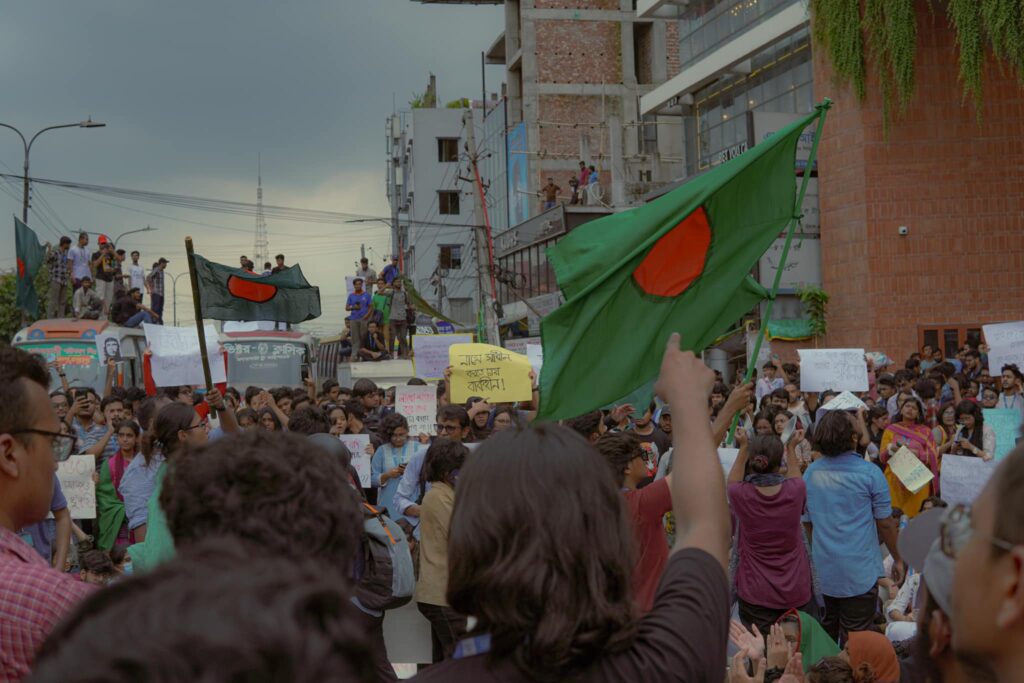
As the death toll rose, so did the students’ anger and determination. The demands evolved quickly—first for quota reform, then for an apology from Sheikh Hasina, the resignation of key ministers, and justice for the murdered protesters. The curfew and abduction of key movement leaders only fueled the resistance further.
Even an internet shutdown couldn’t quell the wildfire of resistance. The police intensified their repression, conducting block raids, mass arrests from hostels, and detaining students on the streets after checking their phones. Yet the spirits of Khudiram Bose, Masterda Surja Sen, and Pritilata Waddedar had already encapsulated the students, making their resolve unbreakable.
Many of those living in hostels retreated to their hometown while some were forced to take refuge at a friend’s house. Still, the protests continued. On July 19th, BracU and EWU students flocked to the Badda-Rampura streets, ensuring the blockade remained intact.
This revolution was a testament to resilience. It saw an unprecedented number of female students on the streets, standing against police brutality. On July 18th, reporters witnessed five injured female students being taken to the university’s medical center.
One such student, Agnidrohee Spondon (Sophomore, Architecture) had her leg burned by a tear shell shot. Yet she continued to join the protests in the days that followed. She was inspired by the large female presence during the movement but emphasized that “our identities should not be limited to our gender.”
Sahana Parvin Nupur (sophomore, CSE) took back to the streets after the blackout ended. “I was compelled to go out for morality,” she said. Being the only daughter of her family, she faced resistance from her parents about joining the protests. But later, her parents joined her, seeing many others protesting alongside their children.
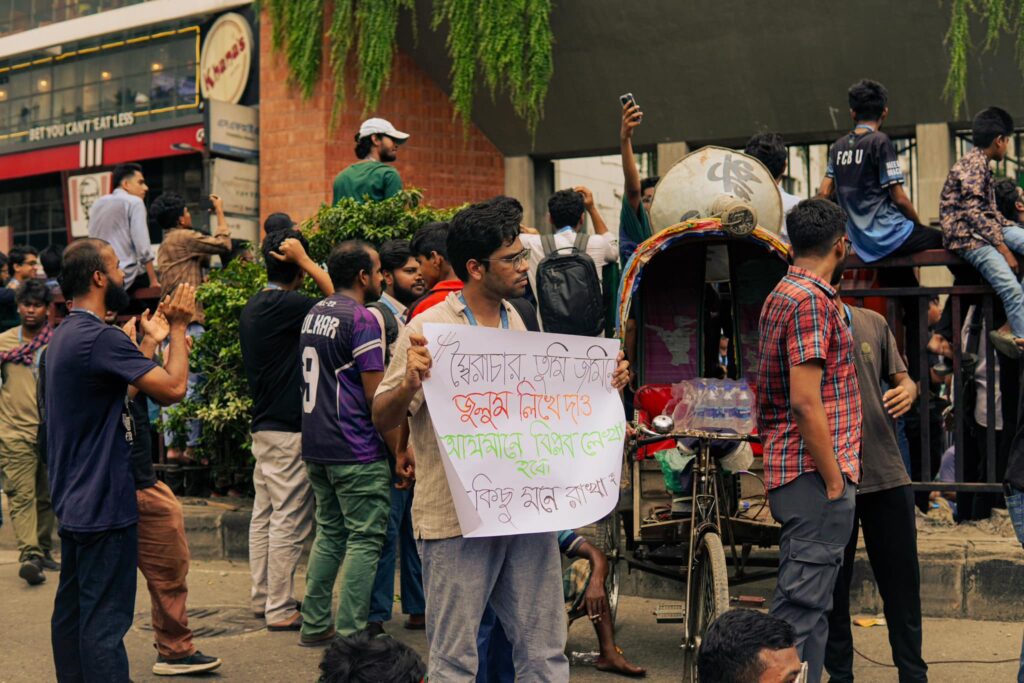
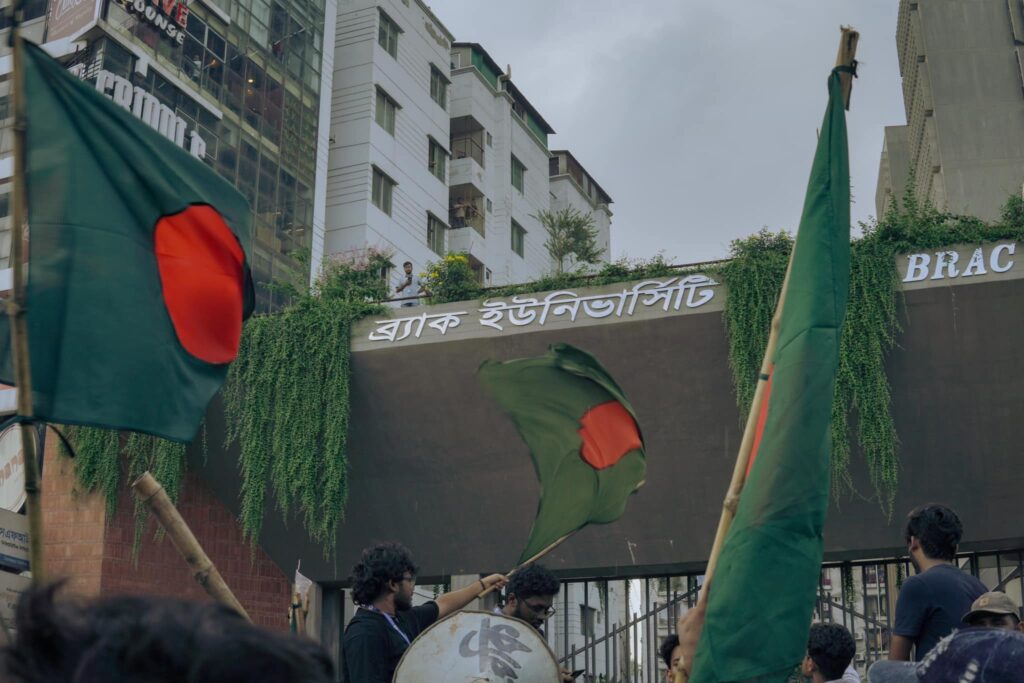
For Agnidrohee and many others, the goal was clear: this was a mass movement against mass killings.
The resistance continued on digital platforms as well. A collective of faculty took to social media to protest the repression of students and demand the release of the detained. On August 2nd, they bound their mouths with red cloth to express solidarity. On August 3rd, more than six hundred faculty members issued a statement condemning the brutal attacks on students and demanding justice.
Another vital act of online resistance was the creation of Jogajog, a communication server developed by BracU CSE students Rafid Khan and Chowdhury Isfatul Karim, along with their friends. Hosted on local servers using a home PC, this chat platform operated without internet access. Remarkably, a team of doctors from Square Hospital relied on Jogajog for internal communications during the blackout, as shared by Chowdhury on his Facebook profile.
Between August 2nd and 5th, Dhaka became a sea of protest. BracU students marched alongside those from EWU, and faculty members formed human chains in solidarity with their students.
When the call from Shaheed Minar on August 3rd united the nation under a single demand—the end of the fascist regime—Dhaka became a single body of people. Agnidrohee described the day as “a tremendous phenomenon.” A sea of protesters flooded the streets, answering the call for change. As history will remember, students toppled a dictator, and the reformation, which Ahmed calls the “real revolution,” is now underway.


